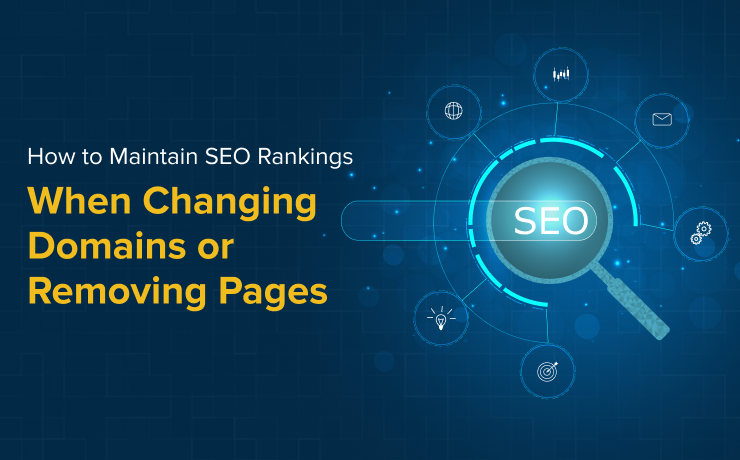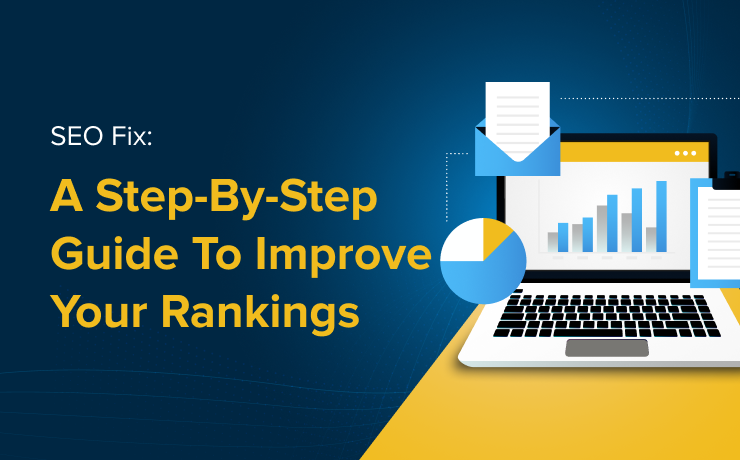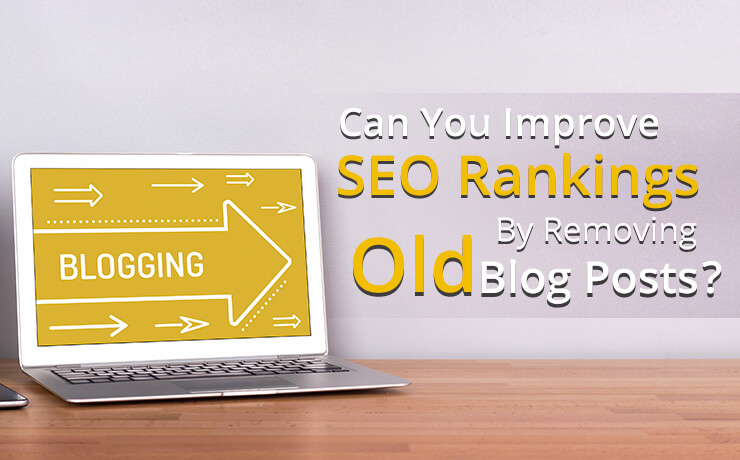How to Maintain SEO Rankings When Changing Domains or Removing Pages

Luna Silva
Senior Project Manager, Training Lead

Website owners face two critical decisions that can significantly impact their SEO (Search Engine Optimization) ranking: changing domains (website address) and removing web pages.
While both actions can be necessary for various reasons, they can also lead to a dramatic drop in search traffic and online visibility if not handled correctly.
Fear not, SEO warriors! This guide will equip you with the knowledge and strategies to navigate these changes without hurting your ranking.
Part 1: The Delicate Dance of Domain Migration
Changing domains can be a strategic move for branding purposes, merging websites, or simply securing a more desirable domain name.
However, search engines heavily rely on existing domain authority when ranking websites. Shifting domains essentially means starting from scratch in the eyes of Google and other search engines.
Here’s how to ensure a smooth domain migration with minimal ranking disruption:
1. Planning is Paramount
- Pre-Migration Analysis: Before embarking on the domain shift, conduct a thorough website audit. Identify your high-performing pages (those with significant organic traffic and backlinks) and analyze your backlink profile (links from other websites pointing to yours). This information will be crucial for the redirection strategy.
- Inform Search Engines: Head over to Google Search Console and submit a Change of Address request. This informs Google that you’re migrating your website and allows them to update their records accordingly.
2. The Power of 301 Redirects
- The Hero of Domain Migration: 301 redirects are permanent redirects that instruct search engines and users that a page has permanently moved to a new location. Implementing these redirects for all your old URLs to their corresponding new URLs on the new domain is crucial. This ensures that users and search engine crawlers land on the correct page and that valuable link equity (ranking power) is transferred to the new domain.
- Precision is Key: Create a detailed map that links each old URL to its corresponding new URL. This ensures accurate redirection for every page. Tools like Screaming Frog or SEMrush can help with this process.
3. Maintaining User Experience
- Seamless Navigation: Don’t forget about your users! Make sure the 301 redirects happen instantly for a smooth user experience. Users shouldn’t notice any significant delay when clicking on a link from the old domain.
- Updated Internal Links: Internal links on your old website that point to other pages within the site should also be updated to point to the new domain location. This ensures a consistent user experience and prevents broken links.
4. Patience is a Virtue
- Ranking Recovery Takes Time: Even with a well-executed website migration, expect some fluctuation in rankings initially. Search engines need time to crawl and index your new domain. Be patient and continue creating high-quality content on the new domain.
5. Continued Link Building
- Don’t Neglect Backlinks: Building backlinks (links from other websites to yours) is critical for rebuilding domain authority on the new domain. Reach out to websites currently linking to your old pages and request an update to the link location. Additionally, focus on creating fresh, high-quality content that attracts new backlinks.
Part 2: Pruning Your Website: Removing Web Pages Strategically
Removing web pages is another common practice. However, deleting irrelevant content without a proper plan can hurt your SEO.
Here’s how to strategically remove web pages while minimizing ranking impact:
1. Assess and Analyze
- Content Audit: Before hitting delete, conduct a content audit. Identify outdated, low-quality, or duplicate content that isn’t performing well. Analyze these pages for organic traffic, backlinks, and user engagement metrics.
2. Redirect or Noindex?
- 301 Redirects for Relevant Content: If the content being removed is still relevant but has a new location on your website, use a 301 redirect to send users and search engines to the new page. This preserves link equity and avoids broken links.
- Noindex for Irrelevant Content: For pages that aren’t relevant or add no value, use a “noindex” tag in the page header. This instructs search engines not to index the page and removes it from search results. This is ideal for outdated content or pages with very low traffic.
3. Backlink Profile Evaluation
- The Power of Backlinks: If pages you’re considering removing have strong backlinks, don’t simply delete them! Explore ways to refresh the content and make it relevant again. This preserves the value of those backlinks.
4. Maintain a Strong Website Structure
- Clarity is Key: Removing pages shouldn’t leave your website with a confusing or unclear structure. Ensure your website maintains a logical hierarchy and internal linking structure for optimal user experience and crawlability by search engines.
5. Monitor and Adapt
- Tracking Performance: After removing pages, closely monitor your website’s traffic and ranking for any significant dips. Tools like Google Search Console and SEMrush can help you track these metrics.
- Be Prepared to Adjust: If you observe a drop in rankings, analyze and identify the affected pages. You might need to reconsider your removal strategy or adjust redirects for better results.
Bonus Tip: Embrace the Power of 404 Pages
- Don’t Leave Users Lost: If a user lands on a page that has been removed, a well-designed 404 error page can salvage the experience. Provide clear and concise information about the missing page and offer options like searching the website or returning to the homepage.
Change Doesn’t Have to Be Scary
Changing domains or removing web pages can seem daunting from an SEO perspective.
With careful planning, execution, and a focus on maintaining a positive user experience, these changes can be implemented smoothly with minimal impact on your rankings.
Remember, SEO is an ongoing process. By being proactive, strategic, and patient, you can navigate these changes and ensure your website remains a top contender in the search engine results pages.
Additional Resources
- Moz Beginner’s Guide to SEO: https://moz.com/beginners-guide-to-seo
- Ahrefs Guide to Migrating Websites: https://ahrefs.com/blog/website-migration/
- Google Search Console: https://search.google.com/search-console/about
Together, let’s conquer the ever-evolving SEO landscape!
 Free
Consultation
Free
Consultation Free
Google Ads Audit
Free
Google Ads Audit







